Winter
WINTER in Southern California is defined by the arrival of winter storms bringing rain at lower elevations, and often snow over 5000 ft. Winter is a good time to care for your soil - in burned areas, erosion can be a problem. In fuel management zones, the retention of deep -rooted vegetation during spring fire hazard reduction projects should stabilize slopes.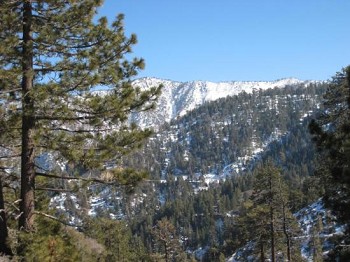
Early winter (December),
is a good time to prepare for frost. Move tender container plants to a protected area. Plants killed by frost can become a fire hazard in the wildland-urban interface.
San Gabriel Mountains, Los Angeles County
MULCHING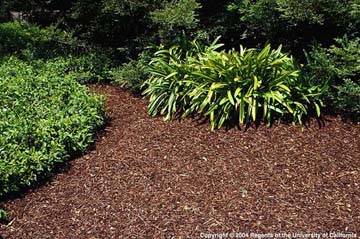
Winter is a good time to apply organic mulches (max 3”- 6” deep) around your plants to help retain water and feed the soil. Applying mulch now will also 1) smother last year’s insect eggs, spores, and weed seeds; 2) allow rain to soak in; 3) allow large pieces to break down before peak fire season. Keep organic mulches at least 30 feet away from structures. Mulches can help keep weeds under control, but this is also a good season to begin other weed control efforts. Consider removing invasive plants from your yard. For information on how to identify and control particular weeds, visit the UCCE Weed Research and Information Center at http://wric.ucdavis.edu, or the California Invasive Plant Council at http://www.cal-ipc.org.
EROSION AND POST-FIRE RECOVERY
In Southern California, fire season ends when rains begin – and winter rains can produce copious run-off from burned or cleared areas. Maintaining native vegetation in a fire-safe landscape can help stabilize hillsides after a burn – the roots of scorched vegetation can still hold the soil. In areas where erosion risks are increased due to fire or over-clearing, additional steps may need to be taken to protect your property from mudslides and erosion. Each situation is different, however, and slope stabilization may require analysis from a soil engineer or geologist. Contact your local public works agency for local guides, site-specific recommendations, and if needed, recommendations for engineering consultants.
In general:
- In the short term, make sure that water and debris are channeled away from your home and property or on to lower-value portions of your property, but not onto your neighbor’s property! Evaluate your topography, and if possible, take advantage of the natural flow patterns. Do not try to dam water and prevent flow entirely. Ditches can be dug to accommodate larger than usual flows, and sandbags can be used to build small levees to guide flows. Contact your local fire or public works agency for more information.
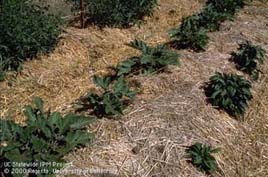
- Seeding hillsides after a fire is usually not effective in Southern California. Often, seeds won’t germinate and develop roots to hold soil until rains have already arrived, and in many circumstances that may be too late. Seeding may also contribute to invasive species problems, type conversion, and the loss of habitat. Straw bales and organic mulches may be more effective. Choose weed-free straw to avoid problems down the road!
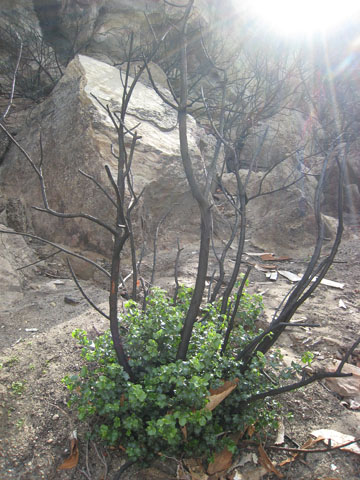
- In the long term, fire-adapted native plants will often recover within the first few months to few years after a fire, even if they look scorched. If trees on your property were scorched, try to wait as long as possible to see if they will recover – only remove burnt trees that pose an immediate hazard. Even if they do not recover, dead snags can provide important habitat for animals that have lost their homes to fire.
- Burned areas are prone to invasion by non-native weeds. Often, control of invasive plants is the most important action that can be taken to promote recovery of wildlands.
Fire recovery in Vasquez Rocks County Park, Agua Dulce
- Revegetation, such as tree planting, is often unnecessary and expensive. If replanting is needed, choose plant species, and even seeds, from local areas to protect the genetic diversity of sites. Planting trees can be harmful to the recovery of shrubland ecosystems. In some places, patience is the most effective recovery tool.
For other useful resources about what to do after a fire, visit http://www.wildfirezone.org/ or your local fire and public works agencies. Remember, each situation is different so necessary measures will vary with your location, topography, vegetation community, and the severity of the fire.
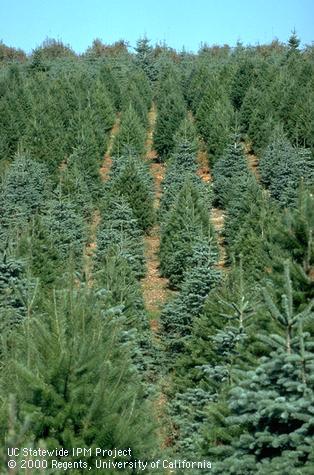
Take special fire safety precautions when keeping a cut tree in the house. A burning tree can rapidly fill a room with fire and deadly gases.
Selecting a Tree
Needles on fresh trees should be green and hard to pull from the branches, and the needle should not snap if the tree has been freshly cut. The trunk should be sticky to the touch. Old trees can be identified by bouncing the tree trunk on the ground. If many needles fall off, the tree has dried out and is a fire hazard.
Caring for Your Tree
Do not place your tree close to a heat source, including a fireplace or heat vent which can dry it out. The heat will dry out the tree, causing it to be more easily ignited by heat, flame or sparks. Be careful not to drop or flick cigarette ashes near a tree. Do not put your live tree up too early or leave it up for longer than two weeks. Keep the tree stand filled with water at all times.
Disposing of Your Tree
Never put tree branches or needles in a fireplace or woodburning stove. When the tree dries out, discard it promptly. The best way to dispose of your tree is by taking it to a recycling center or having it hauled away by a community pick-up service.
Please unplug your Christmas tree lights before you leave the house!
Outdoor Lights
Inspect outdoor decorative lights and make sure electrical elements are clear of any leaf litter or dead plant material.


